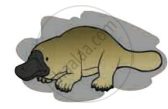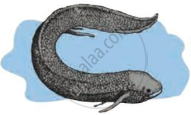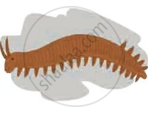Advertisements
Advertisements
Question
The organs P and Q of two animals have different structures but similar functions. On the other hand, the two organs R and S of two other animals have the same basic structure but different functions.
(a) What are the organs like P and Q known as?
(b) Name the organs like P and Q. Also name the animals which have such organs.
(c) What are the organs like R and S called?
(d) Name the organs like R and S. Also name the animals which have such organs.
Solution
(a) Organs P and Q are known as analogous organs.
(b) Wings of an insect and a bird are like P and Q.
(c) Organs R and S are called homologous organs.
(d) Forelimbs of humans and wings of birds are like R and S.
APPEARS IN
RELATED QUESTIONS
Mammals : _________ : : Amphibia : Fishes
The organs which perform different functions but have the same basic structure are known as :
(a) homologous organs
(b) analogous organs
(c) homolytic organs
(d) analytic organs
Write short notes based upon the information known to you.
Embryology
Long answer question.
Would you consider wings of butterfly and bat as homologous or analogous and why?
Give scientific reason.
Duck-billed platypus shows relationship with mammals.
Which evidence of evolution is shown in the given picture? Explain the importance of this evidence.

Write the answers to the questions by observing the figure below.
 |
 |
 |
| (a) | (b) | (c) |
- Write the name of the animal ‘(a)’ in the figure.
- Write the name of the animal ‘(b)’ in the figure.
- Write the name of the animal ‘(c)’ in the figure.
- Which evolutionary evidence is illustrated by this figure?
- Write the definition of that evidence for evolution.
A human hand, a front leg of a cat, a front flipper of a whale and a bat’s wing look dissimilar and adapted for different functions. What is the name given to these organs?
Analogous organs arise due to ______.
I am the connecting link of annelida and arthropoda. What is my name?
